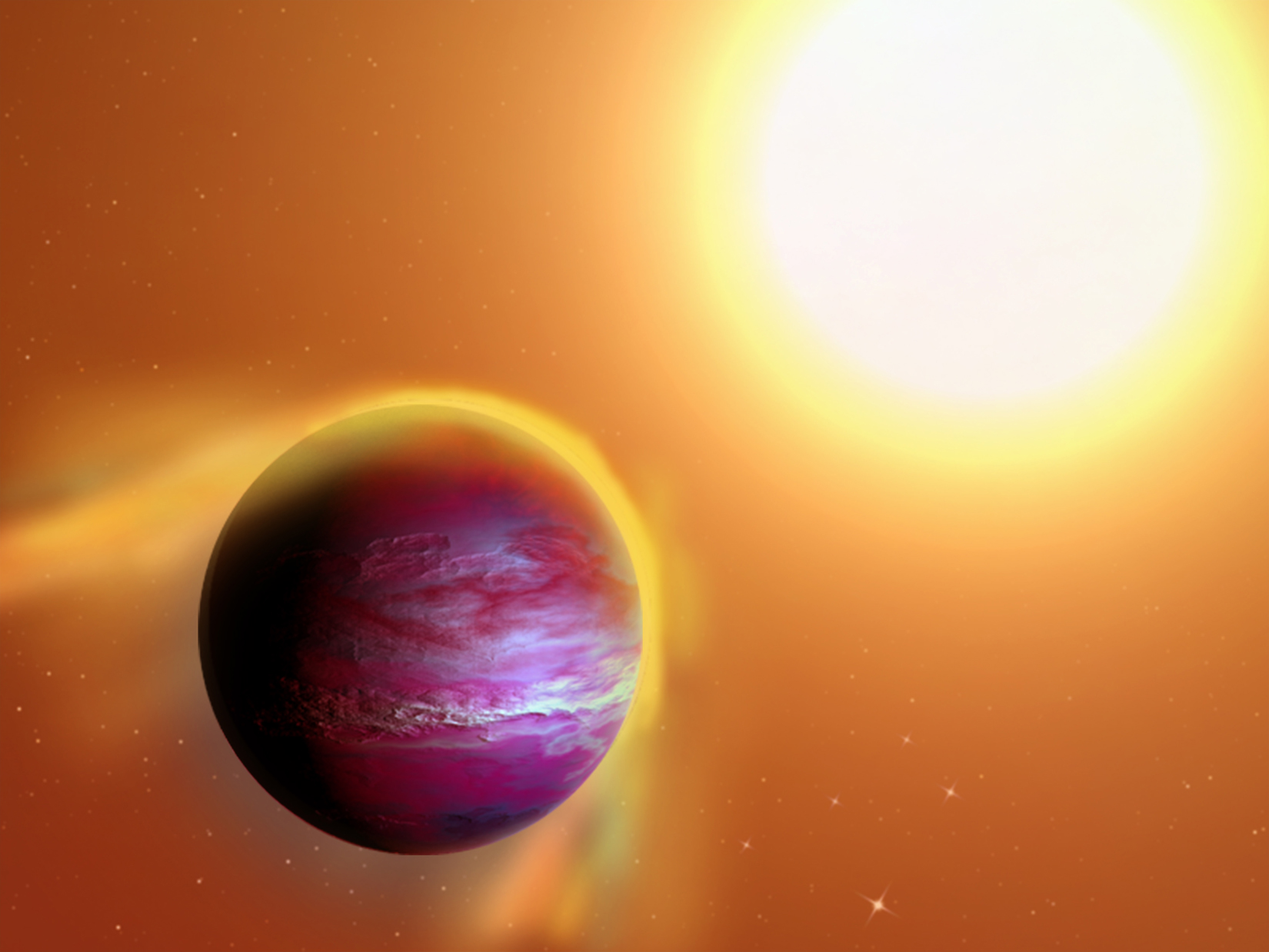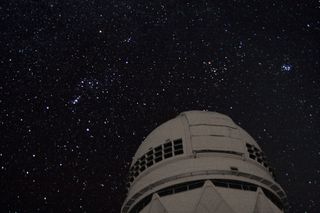
One of the youngest alien worlds ever detected may not be long for this universe.
The outer layers of the Jupiter-like exoplanet candidate PTFO8-8695b are being ripped away by the strong gravity of its 2-million-year-old host star, a new study suggests.
"We don't know the ultimate fate of this planet," study lead author Christopher Johns-Krull, of Rice University in Houston, said in a statement. [Gallery: The Strangest Alien Planets]
"It likely formed farther away from the star and has migrated in to a point where it's being destroyed," he added. "We know there are close-orbiting planets around middle-aged stars that are presumably in stable orbits. What we don't know is how quickly this young planet is going to lose its mass, and whether it will lose too much to survive."
PTFO8-8695b lies about 1,100 light-years from Earth, in the constellation Orion. The "hot Jupiter" orbits extremely close to its host star, completing one lap every 11 hours.
PTFO8-8695b was first identified as a planet candidate in 2012 by the Palomar Transient Factory's Orion survey. It was detected by the "transit method," which notes the tiny brightness dips caused when a planet crosses its host star's face.

Johns-Krull and his colleagues investigated PTFO8-8695b further using the University of Texas at Austin's McDonald Observatory near Fort Davis, Texas, and the Kitt Peak National Observatory 4-meter (13 feet) telescope in southern Arizona.
Get the Space.com Newsletter
Breaking space news, the latest updates on rocket launches, skywatching events and more!
Specifically, the researchers studied high-energy hydrogen emissions coming from the PTFO8-8695 system. They found that such emissions seeming to originate from the planet were almost as bright as those coming from the star, even though PTFO8-8695b is just 3 to 4 percent as wide as the star.
Such an effect could almost certainly not be produced by a feature or phenomenon on the star's surface, Johns-Krull said. So it appears that PTFO8-8695b is a bona fide exoplanet (though it has yet to be confirmed as such).
"We don't yet have absolute proof this is a planet because we don't yet have a firm measure of the planet's mass, but our observations go a long way toward verifying this really is a planet," Johns-Krull said. "We compared our evidence against every other scenario we could imagine, and the weight of the evidence suggests this is one of the youngest planets yet observed."
Astronomers have discovered more than 3,200 exoplanets to date, with thousands of additional candidates such as PTFO8-8695b awaiting official confirmation by follow-up observation or analysis. (NASA's Kepler space telescope has found more than 2,300 of the confirmed alien worlds.)

The vast majority of all alien planets discovered to date circle middle-age stars such as Earth's sun, which is about 4.6 billion years old. Finding planets around newborn stars is difficult, because these stars tend to be incredibly active and variable, generating a lot of "noise" that can hide, swamp or mimic evidence of planets. In addition, there aren't a lot of newborn stars close enough and bright enough for astronomers to study in detail, researchers have said.
The new study has been accepted for publication in The Astrophysical Journal. You can read it for free at the online preprint site arXiv.org: http://arxiv.org/pdf/1606.02701v1.pdf
Follow Mike Wall on Twitter @michaeldwall and Google+. Follow us @Spacedotcom, Facebook or Google+. Originally published on Space.com.
Join our Space Forums to keep talking space on the latest missions, night sky and more! And if you have a news tip, correction or comment, let us know at: community@space.com.

Michael Wall is a Senior Space Writer with Space.com and joined the team in 2010. He primarily covers exoplanets, spaceflight and military space, but has been known to dabble in the space art beat. His book about the search for alien life, "Out There," was published on Nov. 13, 2018. Before becoming a science writer, Michael worked as a herpetologist and wildlife biologist. He has a Ph.D. in evolutionary biology from the University of Sydney, Australia, a bachelor's degree from the University of Arizona, and a graduate certificate in science writing from the University of California, Santa Cruz. To find out what his latest project is, you can follow Michael on Twitter.